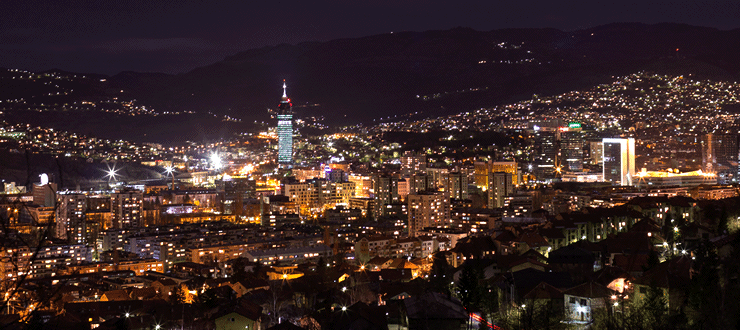|
You are maybe interested in...
More about the history of
Sarajevo through History
Ottoman period
Austro-Hungarian period
Birth of Present-Day Sarajevo
Olympic Sarajevo
Sarajevo today
Sarajevo look at:
Interactive Google Map

Use Google Map to find a particular sight or browse within a category: from museums, natural sights, restaurants, art galleries...

|
Home › Birth of Present-Day Sarajevo
 Birth of Present-Day Sarajevo
 Shots that assassinated Franz Ferdinand, the Austro-Hungarian heir to the throne, and his wife Sophie, exploded across the world. Sarajevo became the place where the First World War was triggered. After the war, Bosnia and Herzegovina became a part of the Kingdom of Serbs, Croats and Slovenians and then Yugoslav Kingdom (until 1945). New ideas and architecture style born in Central Europe immersed into the city’s construction, way of living, dressing, art…
Spirit of Moderna reached Sarajevo and left behind many important buildings and institutions. The Plateau in front of the Central Bank of Bosnia and Herzegovina, built in 1929, with statues of a man and a woman at the entrance, became the gathering venue for Sarajevo"s youth. In social interactions, new ideas and art projects are born thus the Cultural and Artistic Association "Collegium Artisticum" was established in 1939 and started to revive the post-war society. This was the age of artists such as Vojo Dimitrijevic (painter), Ismet Mujezinovic (painter), Isak Samokovlija (novelist), Izet Sarajlic (poet)... The National Theatre was established in 1921 at the former Country Club/Clubhouse, along with the Sarajevo Philharmonic Orchestra, Opera, Ballet and Drama. A new socialist regime was created in the post-Second World War period. It is also an era of rehabilitation and extensive construction. Walking through the city centre you catch a glimpse of some monuments dedicated to war victims and warriors who liberated the city, such as Vjecna vatra (Eternal Fire; 1946) or Memorijalni kompleks spomen parka Vraca (Memorial Park at Vraca; 1981). Regardless of the post-war difficulties, numerous institutions have been established during this period: the National and University Library (1945), museums, Art Gallery of Bosnia and Herzegovina (1946), the Museum of National Liberation (1945; the present-day Historical Museum of Bosnia and Herzegovina), secondary and higher education schools and faculties. Kamerni teatar 55 (Chamber Theatre 55) was established in 1955, along with Gabrijel Gallery and the Theatre"s String Band. Pozoriste mladih (Youth Theatre) is located nearby. The Youth Theatre aims at promoting puppet and dramaturgic arts, scenic movement, dance, pantomime, as well as young artists. In addition to these theatres, there is the Sarajevo War Theatre – SARTR, established in 1992. New industrial capacities and entrepreneurships were established (Energoinvest, Unis, Sipad, Famos), residential areas built a new Railway Station (built 1948-1952). Legendary 60"s and 70"s shook the cultural and artistic life of Sarajevo. Yugoslav rock pioneers, Bijelo dugme and Index bands, left an immense trace on our music scene.  |












